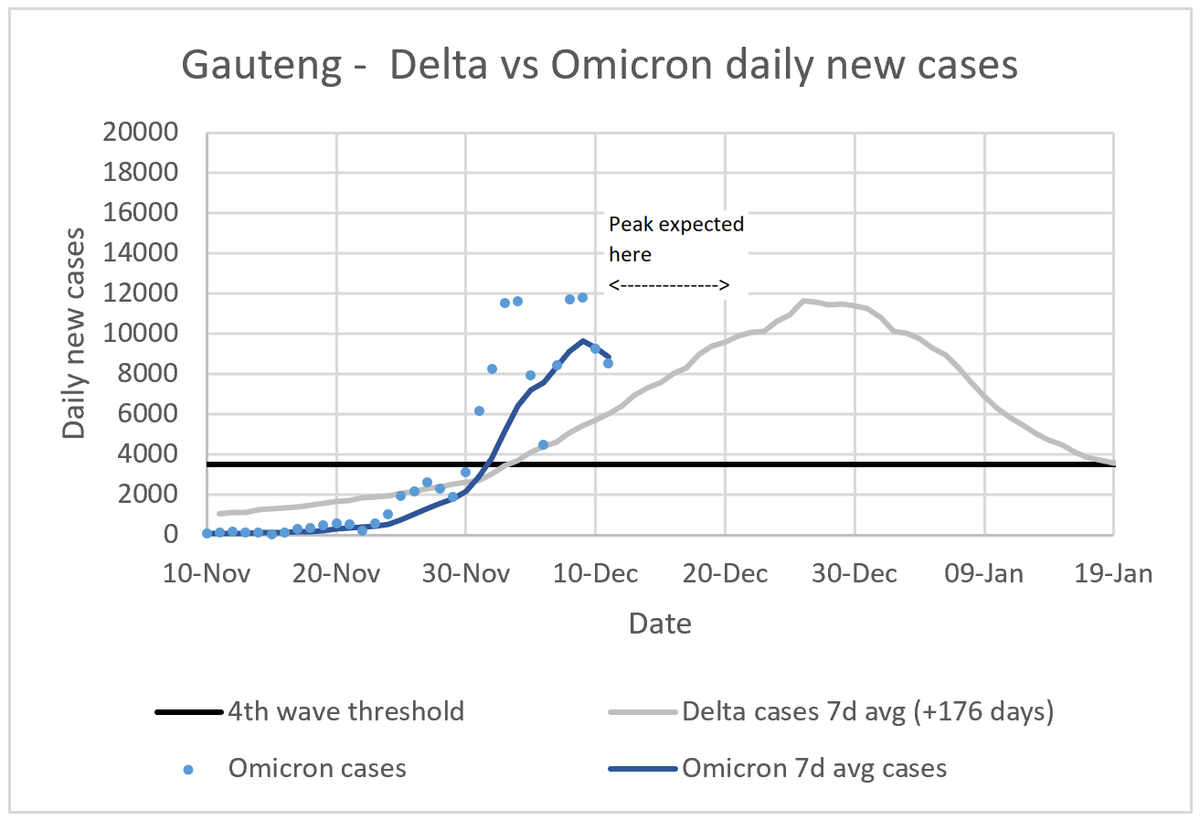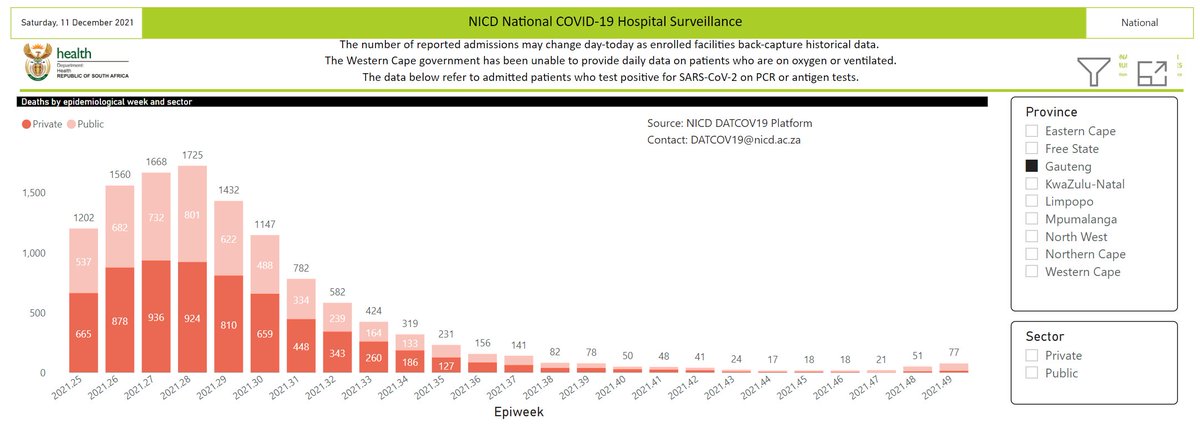
1 of 7:
Gauteng #Omicron update - 12 December.
The 7 day avg cases increased above the previous highest level of 9,645 on 9 December to 10,131 today.
This is most likely the result of a reporting delay (16,716 today).
The peak is now likely to end up in the window specified.
Gauteng #Omicron update - 12 December.
The 7 day avg cases increased above the previous highest level of 9,645 on 9 December to 10,131 today.
This is most likely the result of a reporting delay (16,716 today).
The peak is now likely to end up in the window specified.

2 of 7:
I work with cases by reported date. In this table by Louis Rossouw, cases are given by specimen date, but we will have to wait a day or two to see how the 16k cases from today are allocated.
Either way, growth if any is extremely slow currently.
unsupervised.online/static/covid-1…
I work with cases by reported date. In this table by Louis Rossouw, cases are given by specimen date, but we will have to wait a day or two to see how the 16k cases from today are allocated.
Either way, growth if any is extremely slow currently.
unsupervised.online/static/covid-1…

3 of 7:
The increases in hospital variables were negligible today, but this is most likely the typical weekend effect.
data source: NICD
nicd.ac.za/diseases-a-z-i…
The increases in hospital variables were negligible today, but this is most likely the typical weekend effect.
data source: NICD
nicd.ac.za/diseases-a-z-i…

4 of 7:
The most contentious issue regarding my tweets remain my assertion that #Omicron is extremely mild compared to Delta.
My most compelling argument is that Delta is still running at a CFR of 3% in South Africa, while Omicron is running at ~0.42% at the same time.
The most contentious issue regarding my tweets remain my assertion that #Omicron is extremely mild compared to Delta.
My most compelling argument is that Delta is still running at a CFR of 3% in South Africa, while Omicron is running at ~0.42% at the same time.

5 of 7:
The unexpected early dropoff in cases below my projections might be the result of reporting delays.
All other variables are tracking my projections reasonably well.
The unexpected early dropoff in cases below my projections might be the result of reporting delays.
All other variables are tracking my projections reasonably well.

6 of 7:
A major fear in Europe seems to be the expectation that #Omicron will infect up to 70% of the population.
#Omicron will infect only 15-25% in South Africa, and we only have light restrictions (a curfew from 12-4am).
Restriction details:
gov.za/covid-19/about…
A major fear in Europe seems to be the expectation that #Omicron will infect up to 70% of the population.
#Omicron will infect only 15-25% in South Africa, and we only have light restrictions (a curfew from 12-4am).
Restriction details:
gov.za/covid-19/about…
7 of 7:
All variants and all waves in almost all countries reach saturation at well below 30% infected, even in countries with only light restrictions.
It is unlikely that #Omicron will be different.
All variants and all waves in almost all countries reach saturation at well below 30% infected, even in countries with only light restrictions.
It is unlikely that #Omicron will be different.
Here is an update showing 7 day average cases by specimen date.
More than 50% of cases reported yesterday were sampled several days earlier.
The daily increase is marginal now.
More than 50% of cases reported yesterday were sampled several days earlier.
The daily increase is marginal now.

• • •
Missing some Tweet in this thread? You can try to
force a refresh























